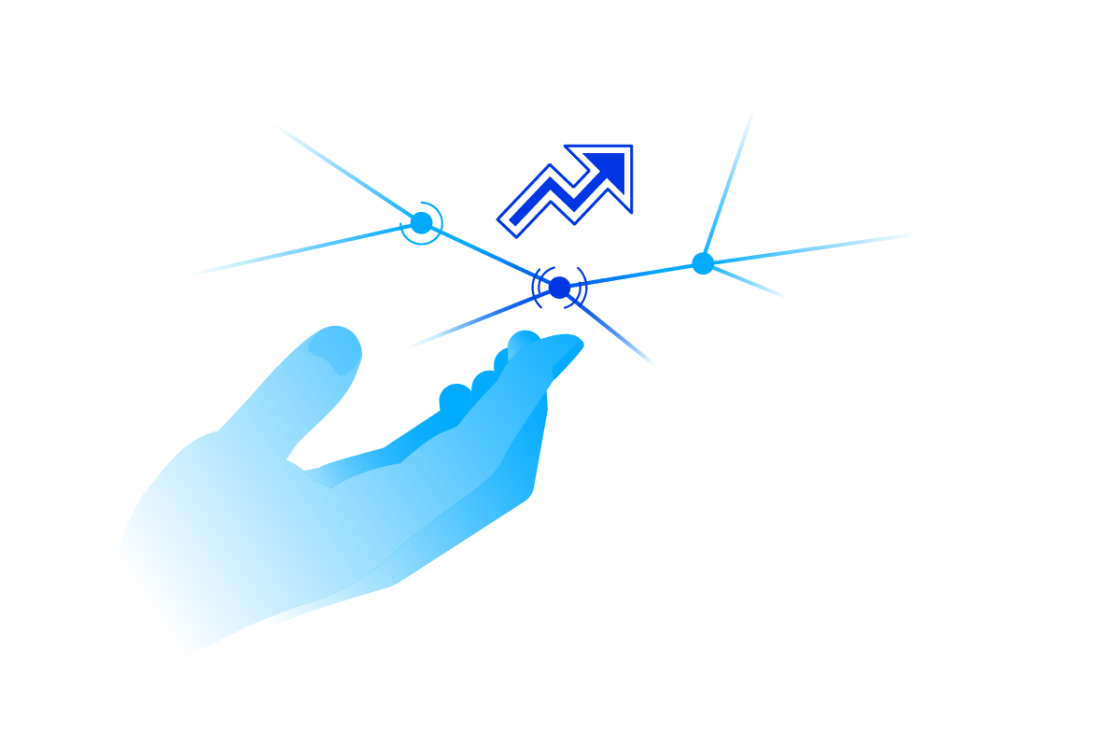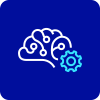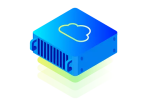What are AI Agents?
Imagine you have a personal assistant who can anticipate your needs, learn your preferences, and complete tasks autonomously, even in changing environments. That's essentially what an artificial intelligence (AI) agent is – a digital entity capable of independent tasks in each environment to achieve specific goals.

For example, your email spam filter is a simple AI agent. It observes incoming messages (environment), analyzes them for spam-like characteristics, and decides whether to move them to the junk folder (action) to keep your inbox clean (goal).
AI agents are becoming increasingly sophisticated, powering everything from chatbots and recommendation systems to self-driving cars and robotic assistants. They share some key characteristics:
- Autonomy: AI agents operate without constant human intervention, making decisions and taking steps according to their programmed intelligence.
- Goal-oriented: They are designed to achieve specific objectives, such as winning a game, providing customer support, or optimizing a process.
- Interactive: AI agents can perceive and respond to their environment, adapting their behavior through the information they gather.
- Adaptability: Many AI agents can learn and improve their performance over time through experience and feedback.
In essence, AI agents are revolutionizing how we interact with technology by enabling software to act intelligently and autonomously on our behalf.
Types of AI Agents
AI agents come in various forms, each with different levels of complexity and capabilities. Here are some of the main types.
Simple Reflex Agents
These are the most basic AI agents. They operate on a simple principle: "If this happens, then do that." They have a set of pre-defined rules that dictate their actions based solely on the current situation. They don't consider past experiences or future consequences.
A thermostat is a classic example of a simple reflex agent. It monitors the current temperature (percept) and turns the heating on or off (action) based on a pre-set threshold (rule).
Model-Based Reflex Agents
These agents are a step up from simple reflex agents. They have an internal "model" of the world that they use to make decisions. This model allows them to consider not only the current situation but also how their steps might affect the environment in the future.
A self-driving car uses a model-based reflex approach. It constantly monitors its surroundings (percepts)—including traffic lights, other vehicles, pedestrians, and road conditions—and uses this information to update its internal model of the world. Then, it decides how to steer, accelerate, or brake to reach its destination safely.
Goal-Based Agents
Goal-based agents are designed to achieve specific objectives. They have a desired outcome in mind and choose their steps according to how likely those actions are to lead to that.
A chess-playing AI is a goals-based agent. Its aim is to win the game. It analyzes the board (percept), evaluates possible moves, and selects the process that it believes will bring it closer to victory.
Utility-Based Agents
These go beyond simply achieving goals. They also consider the "utility" or value of different outcomes. They choose actions that maximize their overall utility, which might involve factors like efficiency, cost, safety, or user satisfaction.
A personal shopping agent that helps you find the best deals online is a utility-based agent. It considers your preferences (e.g., price range, brands, desired features) and searches for products that maximize your "utility" – finding the best combination of quality and value.
Learning Agents
Learning agents can improve their performance over time through experience. They can learn from their mistakes and successes, adapting their behavior to become more effective in achieving their goals.
Your email spam filter is an example. It uses ML techniques (e.g., reinforcement learning) to analyze incoming emails and identify patterns that indicate spam. As it processes more emails, it gets better at recognizing junk mail and filtering it out, improving its performance over time.
How Does an AI Agent Work?
Though in the context of AI solutions, AI agents can be quite complex, they generally operate based on a common underlying architecture. Here's a breakdown of the key components:
- Sensors: These are how the agent perceives its environment. Sensors can be anything from cameras and microphones in a robot to data streams and APIs in an agent. They gather information (percepts) about the current state of the world.
- Percepts: This is the raw data that the agent receives from its sensors. It could be visual input, audio signals, text data, numerical values, or any other form of information relevant to the agent's task.
- Agent Function: This is the "brain" of the AI agent. It takes the percepts as input and decides what to do next. The agent can be a simple set of rules, a machine model, or a combination of different techniques.
- Actuators: These are the components that allow the agent to act upon its environment. Actuators can be physical components such as motors and grippers in a robot or software components that send commands, update databases, or generate outputs, as with generative artificial intelligence using an LLM.
The process typically flows as follows:
- Perception: The agent uses its sensors to gather percepts from the environment.
- Interpretation: The agent function processes the percepts and interprets the current situation.
- Decision-making: Based on its interpretation, the agent decides what steps to take to achieve its goals.
- Action: The agent uses its actuators to execute the chosen action, which in turn affects the environment.
Decision-making and learning play crucial roles in an AI agent's operation. This agent function is responsible for making intelligent decisions based on the available information. This might involve searching for the best solution, evaluating different options, or predicting future outcomes.
Many of these can be learned and improved over time. They might use machine learning algorithms to analyze data, identify patterns, and adjust their behavior accordingly. This process allows them to achieve their goals more effectively and efficiently.
An AI agent is a dynamic system that continuously interacts with its environment, making decisions and taking steps to achieve its objectives.
The combination of perception, decision-making, and studying enables it to operate intelligently and autonomously.
What are the Benefits of AI Agents?
AI agents offer a wide range of advantages that transform industries and revolutionize how we live and work. One of the most significant benefits is increased efficiency and productivity.
Efficiency benefits of automation
By automating repetitive tasks, it frees up human workers to focus on more strategic and creative endeavors. This saves time and resources and optimizes processes, leading to improved overall efficiency.
For example, in manufacturing, AI agents can control robots on the assembly line, optimizing production schedules and minimizing downtime. In customer service, AI-powered chatbots can handle common inquiries, allowing human agents to address more issues.
Improved decision making
It also contributes to improved decision-making. They can analyze vast amounts of data, identify patterns and trends humans might miss, and provide valuable insights to support better decisions.
This is particularly useful in fields like finance, where AI agents can analyze market data to identify investment opportunities, or in healthcare, where they can assist doctors in diagnosing diseases and developing treatment plans.
Better CX
Furthermore, AI agents can enhance customer experiences. They enable businesses to provide personalized recommendations, 24/7 support, and faster response times.
For example, online retailers use it to recommend products based on customer browsing history and preferences, creating a more engaging and satisfying shopping experience. AI-powered virtual assistants can provide instant support to customers, answering questions and resolving issues quickly and efficiently.
Driving innovation
Finally, AI agents are driving innovation and new possibilities. They allow us to explore new solutions, create novel applications, and drive discovery in various fields. From developing new drugs and materials to exploring space and the oceans, AI agents are pushing the boundaries of what's possible and shaping the future of technology.
What are the Challenges of Using AI Agents?
While AI agents offer tremendous potential, their development and deployment also present significant challenges. One major hurdle is development complexity. Building sophisticated AI agents requires specialized expertise, significant computational resources, and access to large datasets.
Designing robust algorithms, training effective models, and ensuring reliable performance can be time-consuming. This complexity can limit the accessibility of AI agent technology for smaller organizations or those lacking specialized AI development teams.
Ethical concerns
Another critical aspect is addressing ethical considerations. AI agents must be developed and used responsibly to avoid bias, ensure fairness, and maintain privacy. If not carefully designed, AI agents can perpetuate existing societal biases or even create new ones, leading to discriminatory outcomes.
Protecting sensitive data and ensuring user privacy are also paramount concerns. Developers need to prioritize ethical considerations throughout the entire lifecycle of AI agents, from design and training to deployment and monitoring.
Security risks
Security risks are another significant challenge. AI agents can be vulnerable to attacks, data breaches, and malicious use. Hackers might attempt to manipulate an agent's behavior, steal sensitive information, or use the agent for malicious purposes.
Ensuring the security and integrity of AI agents is crucial to preventing these risks and maintaining user trust. Robust security measures, including encryption, access controls, and regular audits, are essential to protecting them from potential threats.
Transparency into AI models
Finally, the lack of transparency in some AI agent decision-making processes can be a challenge. It can be difficult to understand how complex AI arrive at their conclusions, making it challenging to explain their behavior or identify potential biases.
This lack of explainability can hinder trust and adoption, especially in critical applications like healthcare or finance. Researchers are actively working on techniques to improve the interpretability of AI agent decisions, making their reasoning more transparent and understandable to humans.
OVHcloud and AI agents
OVHcloud offers a range of cloud solutions designed to support various aspects of AI development and deployment. Here are four key offerings:

AI Notebooks
OVHcloud provides a platform for quickly launching Jupyter and VS Code notebooks in the cloud. This allows data scientists and developers to easily access a pre-configured environment with popular machine learning libraries and frameworks pre-installed. It eliminates the hassle of local setup and provides a scalable and collaborative environment for experimenting with and developing AI models.

AI Training
Designed to facilitate machine learning and deep learning model training. OVHcloud offers access to high-performance GPUs, optimized infrastructure, and tools for efficient training. It allows users to scale their training workloads and manage resources effectively, accelerating the development process and reducing time to market.

AI Deploy
OVHcloud's AI Deploy solution simplifies the deployment of machine learning models into production. It provides tools for creating API endpoints, managing versions, and monitoring performance. This enables businesses to easily integrate AI models into their applications and services, making them accessible to end-users.

AI Endpoints (Alpha)
This solution, currently in alpha, focuses on providing access to pre-trained AI models through APIs. This allows developers to easily integrate advanced AI capabilities, such as image recognition, natural language processing, and predictive analytics, into their applications without building and training their own models.
At OVHcloud, we address different stages of the AI lifecycle, from experimentation and development to training and deployment.
At OVHcloud, we aim to democratize AI and make it more accessible to businesses and developers of all sizes by providing access to powerful infrastructure, optimized tools, and pre-trained models.